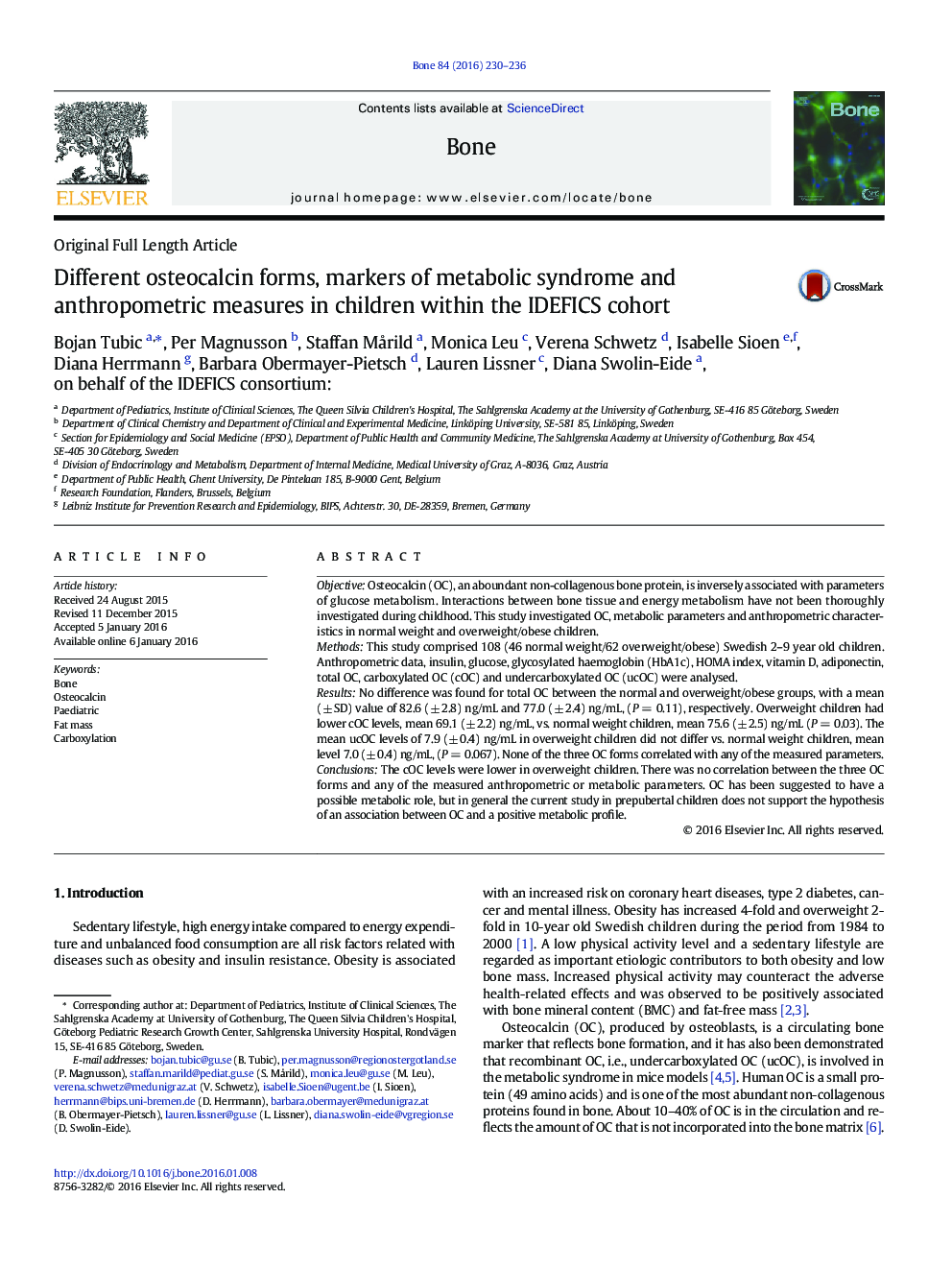| کد مقاله | کد نشریه | سال انتشار | مقاله انگلیسی | نسخه تمام متن |
|---|---|---|---|---|
| 5889437 | 1568135 | 2016 | 7 صفحه PDF | دانلود رایگان |

- There is experimental evidence linking bone and energy metabolism in mice, and that osteocalcin (OC) plays an important role.
- A unique aspect of this study is that all the three forms (i.e., total, carboxylated and undercarboxylated OC) were assessed.
- The three OC forms were evaluated in relation to metabolic and anthropometric parameters in normal and overweight children.
- Carboxylated OC levels were lower in young overweight prepubertal children in comparison with normal weight children.
- The current study does not support the hypothesis of an association between OC and positive a metabolic profile.
ObjectiveOsteocalcin (OC), an aboundant non-collagenous bone protein, is inversely associated with parameters of glucose metabolism. Interactions between bone tissue and energy metabolism have not been thoroughly investigated during childhood. This study investigated OC, metabolic parameters and anthropometric characteristics in normal weight and overweight/obese children.MethodsThis study comprised 108 (46 normal weight/62 overweight/obese) Swedish 2-9 year old children. Anthropometric data, insulin, glucose, glycosylated haemoglobin (HbA1c), HOMA index, vitamin D, adiponectin, total OC, carboxylated OC (cOC) and undercarboxylated OC (ucOC) were analysed.ResultsNo difference was found for total OC between the normal and overweight/obese groups, with a mean (± SD) value of 82.6 (± 2.8) ng/mL and 77.0 (± 2.4) ng/mL, (P = 0.11), respectively. Overweight children had lower cOC levels, mean 69.1 (± 2.2) ng/mL, vs. normal weight children, mean 75.6 (± 2.5) ng/mL (P = 0.03). The mean ucOC levels of 7.9 (± 0.4) ng/mL in overweight children did not differ vs. normal weight children, mean level 7.0 (± 0.4) ng/mL, (P = 0.067). None of the three OC forms correlated with any of the measured parameters.ConclusionsThe cOC levels were lower in overweight children. There was no correlation between the three OC forms and any of the measured anthropometric or metabolic parameters. OC has been suggested to have a possible metabolic role, but in general the current study in prepubertal children does not support the hypothesis of an association between OC and a positive metabolic profile.
Journal: Bone - Volume 84, March 2016, Pages 230-236